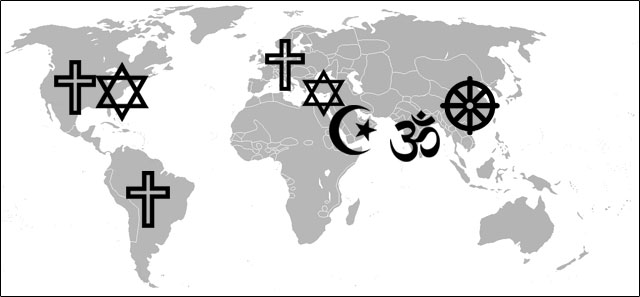
The Five World Religions
The five major world religions are global in reach, and the geographic concentration of their followers has changed often over the course of recent history. In 1500 A.D., Judaism was concentrated in Europe and the Middle East while, in modern times, most Jews live in Israel and North America. Christianity was concentrated in Europe and the Middle East, but is dominant in Europe and North and South America now. The followers of Islam went from being located mostly in Asia, Africa, and southern Europe to being concentrated in the Middle East, Africa, and Asia. Hinduism has been reduced in terms of geography. In 1500 A.D., it was concentrated in India and Southeast Asia, while in modern times, it's followers are found in India mostly. Buddhism started in India, but spread to East and Southeast Asia where it still dominates.

Three of the faiths—Judaism, Christianity, and Islam—are all monotheistic religions that have a common heritage in Judaism. Judaism was the first monotheistic religion and is based on the beliefs of Abraham and Moses. Christianity was the second monotheistic religion and is based on the teachings of Jesus Christ. Islam was the third monotheistic religion founded by Muhammad and includes the Five Pillars. Hinduism has many gods and believes in reincarnation and karma. Lastly, Buddhism is based on the religious and philosophic teachings of Siddhartha Gautama and includes the Four Noble Truths and the Eightfold Path to Enlightenment.
Throughout your study of world history, you will find that many states and empires will be built around one of these religions and will integrate these beliefs into their government institutions and laws. The five world religions have had a profound impact on world culture and civilizations.




